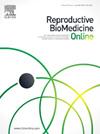THE IMPACT OF POST-THAW BLASTOCELE EXPANSION GRADE PROGRESSION ON ONGOING PREGNANCY RATES IN FROZEN-THAWED BLASTOCYST TRANSFER CYCLES
IF 3.7
2区 医学
Q1 OBSTETRICS & GYNECOLOGY
引用次数: 0
Abstract
Objective
This study aims to examine the impact of the degree of progression in blastocele expansion grade from pre-vitrification to post-thaw stages on ongoing pregnancy rates (OPRs) in frozen-thawed blastocyst transfer cycles.
Materials and Methods
This retrospective cohort study was conducted at Hacettepe University, IVF Unit, between January 2014 and June 2024. The study included patients aged 20-44 years, with a BMI ≤ 35, who underwent single blastocyst embryo transfer with no preimplantation genetic tests or a partner with azoospermia. Embryos were initially graded at the pre-vitrification stage using the Gardner grading system. After thawing, they were re-evaluated 4-6 hours later to assess changes in the degree of blastocyst cavity expansion. Embryos were categorized into No progression, +1 progression (progression by one stage), and +2 progression (progression by two stages) groups. Data analysis included adjustments for BMI, maternal age, FET protocol type, and cycle number. The primary outcome, ongoing pregnancy, was defined as the presence of an intrauterine fetal heartbeat.
Results
The study included 449 single blastocyst transfer cycle. The OPRs for each combination of blastocyst morphological grade and blastocele expansion grade progression groups, and the odds ratios (OR) of OPRs compared to the reference group (poor embryo transfer with no progression of expansion) are presented in the Table 1. Univariately, both blastocyst morphology (excellent, good, average, and poor grading) and the degree of progression in blastocele expansion grade (0, +1, and +2 grading) have moderate accuracy in predicting pregnancy outcomes, with AUC values of 0.621 [0.574-0.667] and 0.630 [0.584-0.677], respectively. However, the DeLong test results show no statistically significant difference between the two AUC values (p = 0.617).
Discussion and Conclusion
These findings suggest that blastocysts with an advancement in blastocele expansion grade compared to their pre-vitrification evaluation have higher OPRs than those with no advancement. The results indicate that embryological evaluation at the post-thaw stage could be a predictive factor for OPRs.
求助全文
约1分钟内获得全文
求助全文
来源期刊

Reproductive biomedicine online
医学-妇产科学
CiteScore
7.20
自引率
7.50%
发文量
391
审稿时长
50 days
期刊介绍:
Reproductive BioMedicine Online covers the formation, growth and differentiation of the human embryo. It is intended to bring to public attention new research on biological and clinical research on human reproduction and the human embryo including relevant studies on animals. It is published by a group of scientists and clinicians working in these fields of study. Its audience comprises researchers, clinicians, practitioners, academics and patients.
Context:
The period of human embryonic growth covered is between the formation of the primordial germ cells in the fetus until mid-pregnancy. High quality research on lower animals is included if it helps to clarify the human situation. Studies progressing to birth and later are published if they have a direct bearing on events in the earlier stages of pregnancy.
 求助内容:
求助内容: 应助结果提醒方式:
应助结果提醒方式:


